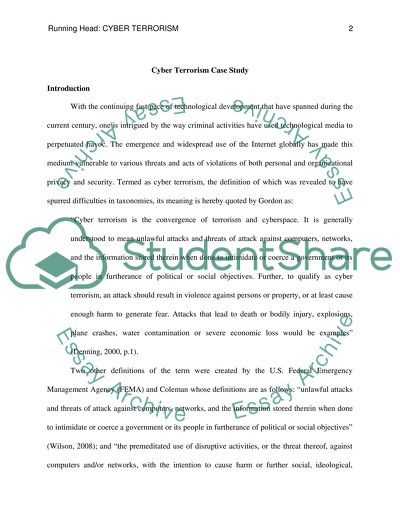Cite this document
(“Cyber Terrorism Case Study Example | Topics and Well Written Essays - 1250 words”, n.d.)
Retrieved from https://studentshare.org/information-technology/1445113-cyber-terrorism
Retrieved from https://studentshare.org/information-technology/1445113-cyber-terrorism
(Cyber Terrorism Case Study Example | Topics and Well Written Essays - 1250 Words)
https://studentshare.org/information-technology/1445113-cyber-terrorism.
https://studentshare.org/information-technology/1445113-cyber-terrorism.
“Cyber Terrorism Case Study Example | Topics and Well Written Essays - 1250 Words”, n.d. https://studentshare.org/information-technology/1445113-cyber-terrorism.


